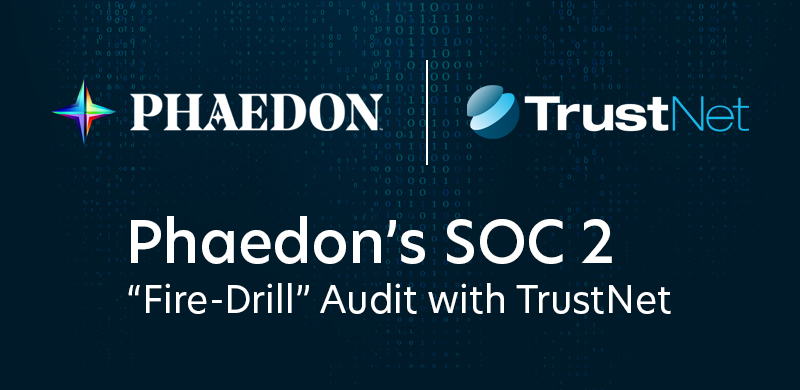Blog The True Cost of SOC 2: What Are You Really Paying For? (Part 2)
The True Cost of SOC 2: What Are You Really Paying For? (Part 2)

74% of businesses report that they are not able to properly address vulnerabilities due to limited budgets and resources. Couple these with their limited knowledge of the actual costs of compliance efforts like SOC 2.
SOC 2, or Systems and Organization Controls 2, is a crucial standard for ensuring data security and privacy in service organizations. However, one of the biggest challenges companies face is the lack of SOC 2 pricing transparency. Understanding the specific components of SOC 2 compliance costs is essential for better budgeting and financial planning.
Demystifying SOC 2 Pricing: A Breakdown of Key Cost Components
Understanding SOC 2 pricing components is essential for businesses aiming to achieve and maintain compliance. Below, we break down the key cost components associated with SOC 2 compliance.
1. Auditor Fees: The Heart of SOC 2 Cost
Auditor fees are one of the most significant factors in SOC 2 compliance costs. Several elements influence these fees:
Factors Influencing Fees:
-
- Auditor Expertise: More experienced and reputable auditors often charge higher fees.
- Industry Experience: Auditors with specific industry knowledge may command premium rates due to their specialized expertise.
- Geographical Location: The cost of auditor fees can vary based on the location of the service organization and the auditor.
Average Cost Ranges:
For the audit alone, SOC 2 Type 1 costs range from $5,000 to $20,000. SOC 2 Type 2 audits are more comprehensive and typically cost between $7,000 and $150,000.
2. Preparation Costs: Getting Audit-Ready
Preparation costs are crucial to ensure your organization is audit-ready. These costs include:
— Internal Readiness Assessments:
Conducting a SOC 2 readiness assessment helps identify gaps and optimize costs by addressing issues proactively.
—Documentation and Policy Development:
Developing or updating security policies and procedures to align with SOC 2 criteria involves significant preparation costs.
3. Remediation Costs: Addressing Security Gaps
During the preparation phase, you may discover security vulnerabilities that need to be addressed, leading to remediation costs:
—Identifying Vulnerabilities:
Security gaps found during the preparation phase can vary in severity and directly impact remediation costs.
—Implementing Controls:
The cost of implementing new controls or strengthening existing ones to address identified gaps can add up quickly.
4. Ongoing Maintenance: Keeping Your SOC 2 Posture Strong
Ongoing maintenance costs are essential for maintaining SOC 2 compliance over time. These include:
—Continuous Monitoring and Updates:
Regular security monitoring and updates are critical to maintaining compliance. The costs of the tools and personnel required for continuous monitoring can be substantial.
—Training and Awareness Programs:
Investing in employee training programs ensures that your team maintains a strong security culture, contributing to ongoing maintenance costs.
For more on our SOC 2 compliance services, Click Here
Beyond the Core: Additional Costs to Consider
Beyond the core components, several additional costs can impact your SOC 2 compliance budget.
1. Technology and Tools: Streamlining Compliance
SOC 2 technology costs are essential for ensuring seamless compliance processes:
-
- Compliance Management Software: Investing in software specifically designed for compliance management can streamline audit preparation and monitoring.
- Security Information and Event Management (SIEM) Tools: SIEM tools help in the continuous monitoring and logging of security events, which is crucial for maintaining SOC 2 compliance.
2. Opportunity Costs: The Time Factor
Opportunity costs SOC 2 compliance efforts can have significant indirect impacts on your business operations:
-
- Employee Time Spent on Audits: The time employees spend preparing for and participating in audits can detract from their regular duties, potentially affecting productivity.
- Potential Revenue Loss: Focusing on compliance efforts may lead to temporary revenue loss due to diverted attention and resources.
Strategies to Optimize Your SOC 2 Investment
Effectively managing your SOC 2 compliance costs requires strategic planning and execution. Here are some key strategies to optimize your SOC 2 investment.
1. Limiting the Audit Scope: Focus on What Matters Most
Limiting SOC 2 audit scope can significantly impact your overall costs:
Identify Critical Systems and Processes: By focusing the audit only on essential systems and processes, you can reduce the scope, and consequently, the associated costs. This not only makes the audit more manageable but also ensures that you are concentrating on your efforts where they matter most.
Type 1 vs. Type 2 SOC 2 Reports – Cost Considerations:
Type 1 vs. Type 2 Costs: Type 1 reports, which focus on the design of controls at a specific point in time, are generally less expensive than Type 2 reports, which assess the operational effectiveness of these controls over a period. Understanding these differences can help with budgeting effectively.
2. Conducting Pre-Audit Readiness Assessments: A Proactive Approach
Pre-audit readiness assessments offer a proactive approach to managing compliance:
Benefits of Gap Analysis: Performing thorough gap analyses can identify potential issues before the formal audit. Addressing these gaps early leads to smoother audit processes and can result in lower overall costs. This proactive approach ensures preparedness and minimizes last-minute surprises.
By implementing these strategies, businesses can effectively manage their SOC 2 compliance investments, ensuring both cost-efficiency and robust security practices.
Navigating SOC 2 Pricing with Confidence
To effectively manage SOC 2 compliance costs, it’s essential to understand the various SOC 2 pricing components. Each component can significantly impact your overall investment, and the variation in pricing largely depends on the size and complexity of your business.
Effective SOC 2 cost management is crucial for ensuring that your compliance efforts are both efficient and financially sustainable. Strategic planning and implementing cost-optimization strategies can help you achieve compliance without overspending.
Stay tuned for Part 3, where we will explore how businesses of different sizes can tailor their SOC 2 compliance strategies to fit their specific needs and budgets.
Contact Our Experts today.
FAQs About SOC 2 Pricing
A. Addressing SOC 2 Pricing FAQs
What are the main SOC 2 costs for different business sizes?
- Small Businesses: Often face lower auditor fees and preparation costs but must still budget for essential compliance tools and internal readiness assessments.
- Medium-Sized Enterprises: May incur higher costs due to more complex systems and the need for comprehensive compliance management tools. Considering both Type 1 and Type 2 reports is crucial.
- Large Organizations: Typically face the highest costs due to extensive systems, requiring advanced compliance solutions and potentially higher auditor fees. Engaging external experts can also add to the overall cost.
For a detailed breakdown by size, consider referring to Part 3:
B. Tips for Budgeting for SOC 2 Compliance
- Adopt a Proactive Approach: Conduct pre-audit readiness assessments to identify and address gaps early, leading to smoother audits and reduced costs.
- Limit Audit Scope: Focus on critical systems and processes to reduce the extent of the audit and associated expenses.
- Invest in Scalable Solutions: Choose compliance tools that can grow with your business, avoiding unnecessary upgrades and changes.
- Plan for Ongoing Maintenance: Allocate a budget for continuous monitoring, regular updates, and employee training programs to maintain compliance over time.




